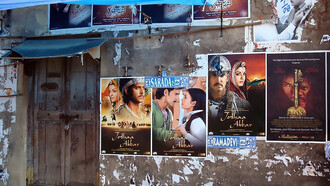Also known as The Archers, Michael Powell (1905–1990) and Emeric Pressburger (1902–1988) still represent one of the most innovative and visionary production companies in the history of British and world cinema.
Celebrated by a recent documentary narrated by Martin Scorsese, the duo is also thoroughly analysed in a recent volume, published by Bloomsbury, which revisits their entire career. A true magical universe that we retrace with the editors: Nathalie Morris and Claire Smith.
The book aims to give voice not only to Powell and Pressburger, but to all those collaborators who have contributed to their filmmaking over the course of their careers. What new light has this approach shed on the duo’s work?
In many ways, the Archers worked more like a traditional theatrical company than a film production unit. The scene in The Red Shoes, in which Lermontov and his composer, choreographer, designer and performers come together to create their ballet production, really serves as a shorthand representation of their process and beliefs. They filled their company with some of the most brilliant visual stylists and storytellers of the Twentieth Century, who all played their own, unique, part in the Archers’ ‘composed’ films. A glance at the budget sheets reveals just how many creatives were involved. But when digging deeper into the archive, it was possible to see just how meaningful and long running these partnerships were. The friendships that sustained them. The challenges that defined them.
Your iconographic and documentary research work is enormous. What were the most striking surprises you came across during the writing process?
A constant surprise is just how much material culture might lie behind not only a single production – but also the contribution of a single individual. Hein Heckroth’s artistic output was enormous, for example – and now stretches over continents. He designed for theatre, film and television and left behind an incredible material legacy of design work now carefully preserved in different archives including the BFI National Archive.
Which relics are you most excited to have unearthed from the various collections mentioned?
It’s always exciting to find evidence of lives lived through film. Particularly where records in public collections may be limited. The contribution of scenic artist Vishwanath Nageshkar to Black Narcissus, for example – who is not always formally credited. Working with art department records and photographic archives, it became clear how his work influenced the final look and feel of Mopu. And it shows how Powell and Pressburger’s collaborative tendencies weren’t confined to their most longstanding collaborators. The Archers was an ever extending professional family.
It was also a real treat to be able to piece together different designs for the 'Red Shoes Ballet’ held across multiple archive collections. We were also excited to see the original designs for the camera obscura scene and for one of the colour/black and white transitions in A Matter of Life and Death held at the Harry Ransom Centre in Texas, both of which are reproduced in the book.
What elements can still attract contemporary viewers to the creativity and visionariness of Powell and Pressburger?
When first starting our research, it quickly became clear just what a profound and longstanding influence these filmmakers have had on multiple generations of creatives. Of all of the filmmakers that we’ve worked with, their productions are some of the most frequently cited as a point of inspiration. Not just for filmmakers—but fashion designers, photographers, and authors. We chose to let some of these creatives speak for themselves within the publication. What’s apparent is that there is a richness and a generosity to P&P’s filmmaking, which seems to invite in contemporary practitioners. Their productions feel strikingly relevant. And each artist is able to take something very different from the production, dependent on their own practice. Perhaps it’s that balance of boldly creative and often poetic energy; coupled with a sensitivity to the emotional landscape that we navigate as humans. It’s a powerful combination for contemporary artists of every kind.
You describe their work as magical and obsessive, an opinion also shared by Martin Scorsese's recent documentary. Both the book and the feature film highlight the impossibility of imagining their films without the contribution of their respective personalities. Why, in your opinion, were they so complementary?
In many respects, Powell and Pressburger were complementary opposites. Pressburger was an Anglophile European, and Powell was a cosmopolitan Englishman, very much in love with European cinema and culture more widely. This is reflected in their films, which combine a continental sophistication with an sympathetic (although not uncritical) exploration of British culture, and a powerful, almost mystical sense of (British) place. In terms of how they worked, their shared credit ‘Written, Produced, and Directed by’ reflects how involved they were across all aspects of a film. Although Pressburger is generally perceived as the writer and Powell as the director, they would work together on Pressburger’s first draft, passing it back and forth and honing it in the process. Pressburger would always be on set while Powell directed, and would generally be the one who worked most closely with the editor. Historically, Powell has received the most attention from film historians and critics, but it was always very much a partnership of creative equals, supported by their incredible array of artistic collaborators.















